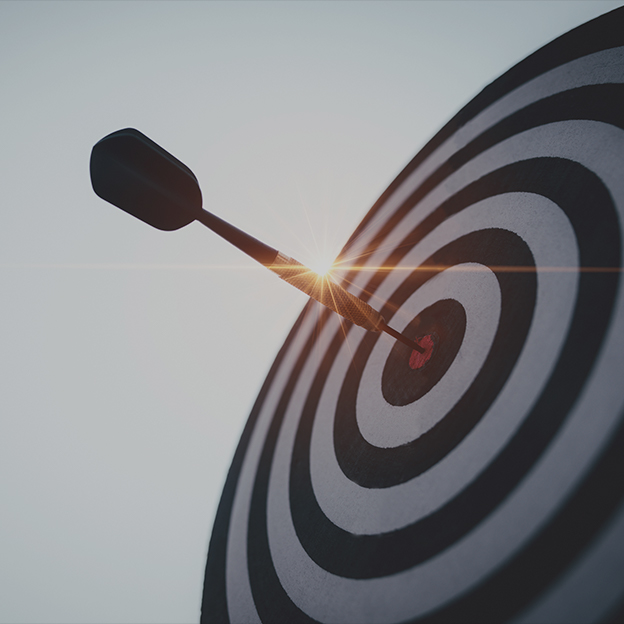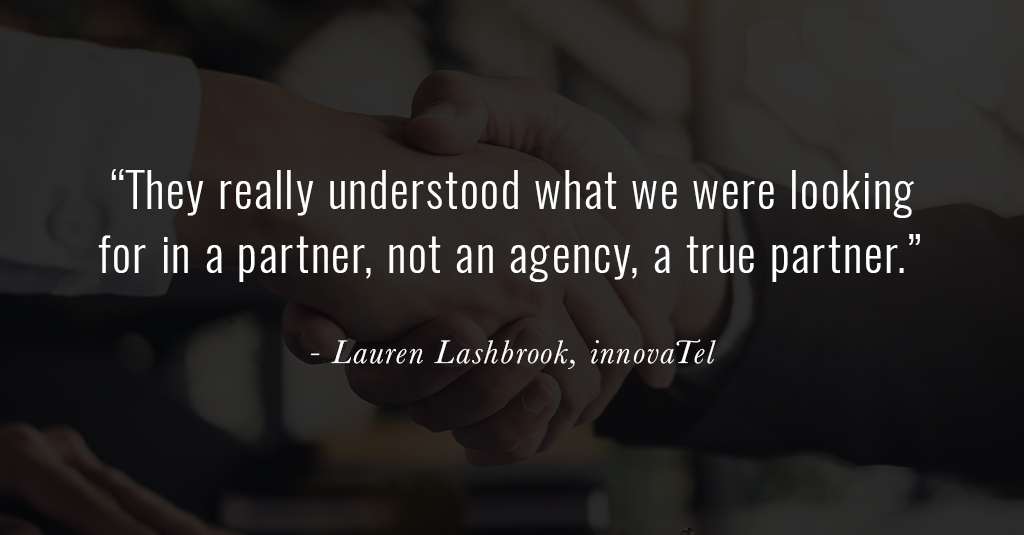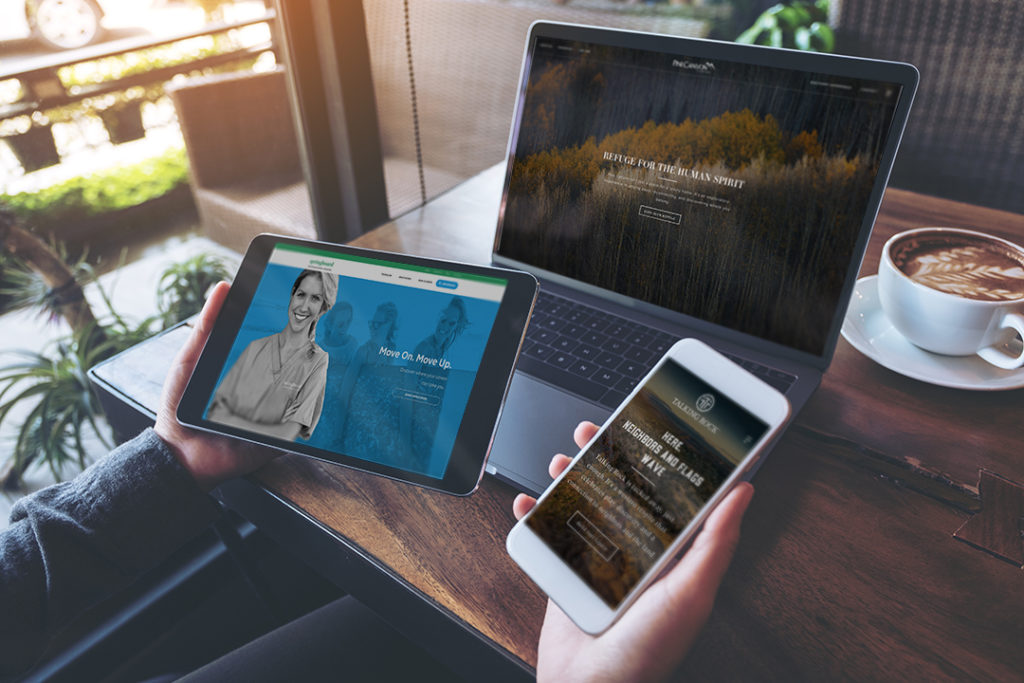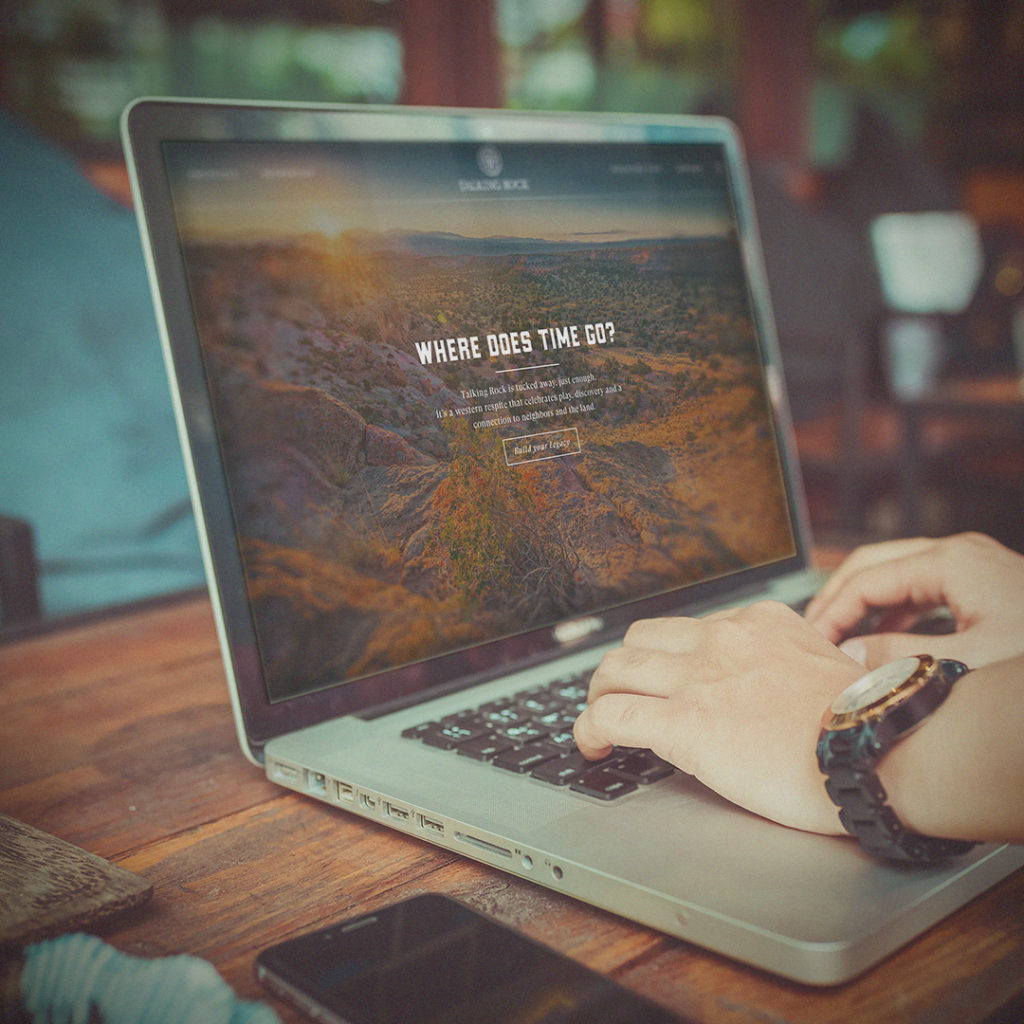Category: Blog
Assume Your Assumptions Are No Good


We’ve finally reached the meat, the juicy stuff. That sounds weird without context, but for carnivores, it must sound like some kind of glorious summit.
In reality, it’s exciting for everyone, even vegetarians. Because this is the culmination of the work we’ve been unfolding over the past few weeks as we explain our H.A.L.O. business system, a unique and holistic approach to branding and marketing based on values and rooted in immersive behavioral analysis.
We’ve mapped a brand’s genetic code, we’ve contextualized personas and the customer journey, and we’ve created a customized plan, based on budgets and goals, for a brand to realize the kind of success that — to this point — has alluded it.
We know. It sounds like magic or wild theory or even one of those “but wait there’s more” kind of things. But, it’s not. It’s just an industry-agnostic system that works.
Because everyone’s desire for something that works is equal. It’s not dependent on the size of the investment, whether your marketing budget is 20 bucks, $20,000 or $2 million. You want a return that is worth something. And that return, be it qualified leads, improved awareness or increased conversions, can translate to improved reputation, additional revenue or better recognition in a crowded marketplace.
That’s why our Avenues Plan drills down to specifics, providing exact coordinates for the placement of marketing dollars based on the work completed throughout the entire process. And oftentimes, by the time we arrive here, we are coordinating a solution for an issue that a brand had misdiagnosed, or completely missed, at the outset.
But that’s what this process is for. While it’s not designed to manufacture a branding curveball, it often uncovers unexpected insights, like archeologists dusting off generations of failed assumptions.
Data takes you down the correct paths. Assumptions, most times, don’t.
We could go on and on and on about this stuff, about H.A.L.O., about how well it works and about how much we love digging in and discovering new things about brands and businesses. But, we can’t here.
We’ve got anatomies to code, audiences to dissect and avenues to plan. Want in? Let us know. We’ll get these things going for you, too.
Cruise The Express Lane, Without Carpooling


Road trips have changed over the years. Where our parents would unfold accordion-style maps that seemingly ate up all the space in the front seat, a generation later we’re able to demand directions from a handheld computer, using just our voices.
The common thread? We need a route. Or, we’ll be lost.
Sometimes, if it’s really uncharted territory, we even need a guide. That’s what WHYFOR’s Avenues assessment, part of our H.A.L.O. business system, provides. It leads to a guided tour of the route a brand should take to reach its target audiences, based on its anatomy, its personas and its budget.
Yeah, like any road trip, there’s math involved. But numbers offer clarity and valuable perspective, like gas mileage. You need to know how far you can go with what you have, and which route would be the most efficient and most effective to take.
It makes total sense. But many times, brands or businesses bypass this type of thing. They throw everything in the car and take the route they know, even if it’s entirely uphill. Or, in marketing talk, they allocate their marketing budgets based on old information, tired habits and whatever everyone else is doing.
Despite being trendy, crop tops aren’t for everyone. Twitter isn’t, either. Certain approaches are better for certain types of brands or businesses. And our Avenues assessment sorts all that out.
Imagine that. Imagine knowing exactly who you are, as a brand, knowing exactly how to speak to your audiences because you’ve studied their behaviors, and then knowing exactly which routes to take to reach them. That type of intel changes things, in a good way.
It builds recognition. It improves reputation. If done properly, it drives revenue and it can improve retention. And, it threads together a brand’s DNA, its relationships and the outflow of measurable ROI.
There’s more to the process (think: incredible, insight-driven, customized plan), and we’ll dive into that soon. But, if you can’t wait, call us. We can be persuaded (easily) to talk about our Avenues assessment and its benefits.
Hey. Personas Have Lives, Too.


We’re all trackable. Like, even if we think we’re private, we’re actually not. We have our habits, our favorite Instagrammers and we gravitate towards brands and ideas that predictably sync with our personalities
and passions.
We can be found. And we are, regularly. Which means, brands should take note.
So, when we finish painting the detailed illustrations of our Audience Personas for clients at WHYFOR, we start following the breadcrumbs that sprinkle out from that work — work that identifies with low ambiguity who a business or brand or organization is trying to reach, with specificity. And once we follow those breadcrumbs, we animate the characters we’ve carved out during persona development, folding who they are and how they’re motivated into a blueprint that details where they can be found and how they can be reached.
This entire process, the one we refer to as H.A.L.O., builds on itself as we progress. So, if any of this sounds out there or if you feel like you’ve walked into the middle of a conversation — you have, a little. If you start from the beginning, it all makes sense.
But, now that we’re here, it’s time to consider the customer journey. At WHYFOR, we take a deeply empathetic approach to mapping and fully understanding the journey a persona will take with a brand. Beyond technical UX, we get down to routines. We explore the nitty gritty in a strategic, sensible way.
In short, based on the pain points and motivators we discovered while piecing together personas, we find where a brand fits in a consumer’s orbit. Is it at a conference or trade show (think pre- or post-COVID)? Is it on TikTok or LinkedIn? Is it online, outdoors or in an inbox? Or is it (gasp) over the phone?
And when we reach them, how should we talk to them? Based on what we know, what should we develop that they’d appreciate? A handy download, a fun video or an informative white paper? It all depends.
Our Audience Persona work isn’t complete until we know these things. Think of it as coloring in a picture after outlining it in great detail. It’s all about the shading, right?
The part that cannot be overlooked is that we can’t reach this point, effectively, without doing all the groundwork first. We can’t know how a brand fits into a consumer’s life until we know what the brand stands for and what the consumer looks like.
In other words, you can’t understand your specific audience until you understand yourself — as a business. It’s deep. And life advice-like. But true.
We’re walking clients through it all right now. And to our knowledge, no one has cried yet, except in celebration. We’re not even making that up.
Let us know when you’re ready to dive into your own journey.
Guess Who You’re Talking To? That’s So Old School


Hasbro sells a board game that asks players to use physical characteristics to guess the identity of a secret person their opponent has chosen. Remember that game, Guess Who? It’s a simple premise.
Is it a woman? Does she have glasses? Does he have a mustache? Is her hair red? That kind of thing.
On the most elementary level, and we mean at its most simplistic, it reminds us of the Audience Personas we create as part of our proprietary H.A.L.O. process. Instead of flipping down illustrations of people who don’t fit the persona we’re creating, like we would in the game, we use gigantic sticky notes or digital templates to build profiles of the types of people brands are trying to reach.
It’s a process, a fun, insightful one. It starts where our Anatomy Profile leaves off and leads to the development of an Avenues Plan. On its own, Audience Personas uncover not just how a segment of an audience looks and lives, but how they think, how they behave and what motivates them to act.
This is where things start to fit together. It’s where pieces start to slide into place, and where clients begin to understand why we questioned them about their anatomy and their values so relentlessly and specifically. Because, you have to know who you are and how people view you in order to know who you want to talk to and understand why they would want to hear you.
We could get fancy here and talk about psychographics and demographics, and then pick apart the delineations and necessities of both. But we won’t. We’re going to go Guess Who?-style and keep it simple. Because that falls in line with our approach. We ditch those traditionally bloated and often fluffy reports that never get used in favor of creating specific, actionable plans that feed off our Anatomy Profiles and move us to our customer journey analysis.
Audience Personas get to the root of why people make the choices they do, as it relates to brands. Our ultimate goal is to get to the nerve, to discover the pain point and then understand what factors motivate certain behaviors. Put simply, we want to understand pain points to alleviate them, understand questions audiences have so we can answer them and understand goals so we can help them achieve them.
The data we bring to the surface allows us to create a valuable narrative, featuring fictional characters based on a brand’s true story — like a high-quality, super-specific docudrama. And like any juicy drama, some of the characters (or personas) are driven by money (budgets), some by fame (personal notoriety), some by philosophies and principles (classic Cinderella/Jedi story).
Regardless, those unique motivations are the holy grail. Because ultimately, we want our work to influence decision making and impact revenue.
See? It’s a bit more high level than Guess Who?, but we also don’t shout “Cheater!” like we did as kids as we work through Audience Personas. We’re past that.
And once we’re past harvesting characteristics for brand-specific personas, we build them out so they’re easier to see. We’ll explain that process a bit more, soon.
Need some intel on your Audience Personas? Let’s talk.
How We Put Anatomy Profiles To Work


Discovering who you are can be a trip. On a personal level, that discovery may come in the wake of turbulent trials or while backpacking through the Sierra Nevada mountains or after stumbling through the desert at Burning Man. Different strokes for different folks.
But for brands that work with us, that discovery is born during a thorough analysis of organizational structure, ideals, process and purpose. We’ve talked about it before — the Anatomy Profile we work with brands to create.
And we imagine you probably want to know what comes next. Because getting information is easy, even if it feels hard in the moment. Using it is the real challenge.
We’ve seen too many brands and organizations pay for marketing research or marketing plans or marketing tactics that they never put to use — or don’t even know how to use.
It. Just. Sits. There. And gets stale. And sad.
We’re not into that. So, we put hard work to work, insisting that the time we’ve spent uncovering a brand’s DNA is never wasted. We’re kind of like drill sergeants for insights, without those annoying whistles.
Once we understand a brand’s anatomy, we build out a complete profile. We know who you are now, so we find out how you’d speak to the people you’re trying to reach. But it’s not just about how you talk — it’s also about what
you say.
Anatomy Profiles include the development of core messages, a sort of content compass, informing content plans for any number of platforms, from taglines to digital ads to tweets. These core messages steer your content creation, ensuring a brand’s anatomy shines through, consistently, with every word.
Anatomy work has the potential to uncover a more applicable direction for a brand or organization, and often does. Because it drills down to a common denominator (no fractions needed) and builds a fresh foundation that otherwise may have gone undiscovered.
It’s the whole “forest for the trees” thing.
The entire process allows a brand to reset or rediscover how it wants to make people feel and how it wants to be viewed. Once that self-discovery is done, the army of insights turn and face the audience, because that’s their
next mission.
The information gained from the development of Anatomy Profiles trickles up, if you can visualize that anomaly. It improves your understanding of and ability to convey your unique differentiators in the tone that fits your brand and your audiences.
It’s a delicate dance, and if done properly, can positively impact organizational struggles related to recruitment, retention and recognition, among other issues that start with the letter “r.” There actually are a few more.
And once it’s complete, we start looking at Audience Personas. The Anatomy Profile flows right into it, like a hand into a glove — a working glove made of leather or suede instead of a fancy, white one from those old English shows.
Because, like we said, we put this work to work. Intrigued? Our Anatomy Profile work is something we love to talk about, so let’s connect.
Who Are You, Really?


We’ve all wondered who we are, exactly, at some point. That great existential introspection can be terrifying or exhilarating. Or, maybe both? Regardless, that monumental personal discovery can create understanding, facilitate empathy, inspire connections and fuel change.
It’s heavy. Who we are is pretty much our everything.
Same goes for brands.
It’s foolish to launch marketing efforts, create digital campaigns, and develop logos and taglines and websites if you have no idea who you really are. And you’d be surprised at how many businesses don’t know who they are. It’s startling, actually.
You have to understand yourself first, inside and out. Or, it’s all a waste. We’ve seen the aftermath. And it’s not pretty.
This is what WHYFOR’s Anatomy Profiles accomplish. Part of the H.A.L.O. business system, WHYFOR’s Anatomy Profiles ask all the questions. And by all, we mean every last one.
What makes a brand tick? How does it feel? What would it say? Would it wear tie-dye or cuff links? Cream or sugar, bagels or donuts? All the most important things, from the hard-hitting to the warm-and-fuzzy.
We ask, because we string the answers together to build an organizational gene code. Yeah, our Anatomy Profiles is basically DNA research for brands. It’s actually a science, we just don’t wear lab coats — because despite how serious we are, even we know that would be a bit much.
The work we put into the intensive lab workshop spits out a customized brand recipe, a brand anatomy that acts as a foundation for its larger personality, intentions and direction. It informs the strategic approach towards its audiences and delineates the avenues it will use to reach them.
WHYFOR refers to these elements — anatomy, audiences and avenues — as the 3As. They’re a big deal. And as we said before, they all start with anatomy — knowing what you’re made of.
Brand anatomy uncovers voice and tone, establishing an appropriate feel when delivering messaging, be it in an email, on social media or embedded in ads and collateral. It’s how a brand speaks. It’s what it sounds like.
Is it authoritative? Is it a jokester? Is it educational, empathetic or empowering?
Beyond voice, it also develops a strategy statement, identifies values and sets brand standards for imagery and style, specifying colors and fonts and building a compass of organizational integrity.
WHYFOR’s Anatomy Profiles are vital, basically. And although the profiles unearth a substantial volume of critical intel on a brand, they’re only one step — the first step in the process.
There’s more.
Because finding out who you are is big. But, finding out how to flex, how to use your superpowers, that’s the next step.
To learn more about WHYFOR’s Anatomy Profiles or its H.A.L.O. business system, reach out. We’d love to fill you in.
Referrals > Awards


Not to get all math-y on you
Awards are cool. We have a bunch. They sit, somewhere. And they mean something, in that our work was determined by someone or a collection of someones to be exceptional, either on its own or by comparison.
We were happy when we got them. Who isn’t? But, they don’t drive our creativity, our strategy, our direction, our grit or our relationships right this minute. They sit. And look pretty. Somewhere.
That’s why we like making eyes at referrals better. Referrals, in our minds, are the ultimate compliment. Aren’t they? When someone wants us to do for them what we did for someone else — as it relates to success — that’s the golden ticket. It’s like the kindest way to be blindsided.
That’s the best award.
A referral doesn’t sit anywhere, either. It doesn’t need a shelf or a glass case. Referrals only need energy because they are in motion, pushing us to uncover pain points, dig into faulty connections, discover opportunities and design an approach distinctly customized to achieve that client’s goals.
To us, referrals rock way more than awards. It’s our work speaking for itself, with some help from the client we worked with, but without us blabbing on about ourselves. It’s just organic goodness.
We’re working, right now, with a client who came to us by referral — more specifically, if we’re being honest, which we always like to be — it came by a “Hey. Who did that for you?” kind of inquiry.
We were the answer. And since then, we’ve poured our energy into this new relationship in genuine, strategic, metrics-driven ways as we learn more every day about how to propel them forward. Because, we care about their outcomes more than which award category our work for them would fit.
“From our first meeting with WHYFOR, something was very different,” Lauren Lashbrook, our client contact with innovaTel, said. “They really understood what we were looking for in a partner, not an agency, a true partner. And they didn’t just say they could be a partner like everyone else says, they proved it in every meeting by going above and beyond time and time again.”
See? That kind of thing never needs dusting. Or a glamorous outfit, especially during a pandemic, which is when we started working with them.
It just requires us. And what we do. We’ll take that all day.
From Rob’s Desk: We’re Ripe For A Renaissance


I remember sitting through high school history class, bored, drawing cars, not really paying attention to the topic being discussed. The teacher was going on about the Renaissance, an enlightening period of innovation and artistic accomplishment that came in the wake of the stagnant Middle Ages.
The excruciatingly-bored teenage version of me heard, simply: People in a really old time discovering new things with limited tools. I didn’t think much of it until now, thanks to the COVID-19 pandemic.
The Renaissance, not my doodles.
This virus, and the pandemic it has spawned, is providing us the opportunity, if leveraged correctly, to launch a new renaissance across the United States – like the industrial revolution and the tech boom did in the wake of other difficult times. And with the numbers the way they are, and the economy in the shape it is, what a renaissance it could be.
We just need to be comfortable getting a little uncomfortable.
What a terrifying thing, right? Embracing discomfort. It’s an oxymoron, isn’t it? But the only reason we fear change is because it’s unknown. Change, even if it’s uncomfortable, could be better than the constant we know. How about that?
If you have ever worked with me, you know I love to look at situations from 30,000 feet. It’s the only way to gain clarity and see what’s ahead.
I developed an exercise that I run clients through called “Prophet to Profit.” It gives leaders an elevated view of the work they do, in order to better predict or envision the direction of an organization, an individual, or even an industry. More importantly, it provides a 15,000-foot action plan, so the zero-foot, boots-on-the-ground efforts can spur profit.
I guess I’m doing that now, with our collective whole as my client.
Industries are already demonstrating their abilities to pivot when they’re forced to – when the need to survive weighs more heavily than the need to stick with tradition and the “way we’ve always done things.” Companies that don’t make ventilators, are. Businesses that don’t produce masks, suddenly do. Breweries are stirring up sanitizer.
We are able to change. Especially when we have to.
This is our chance to reset the clock. How does your business, your approach, your life pivot? Now.
Nothing is normal right now. No business, no pantry, no errand, no home life, even as we begin to emerge from our mandated social isolation. We’ve already experienced radical change and new ways of doing things. We’re teaching our kids at home, we’re grocery shopping at weird hours, we’re standing six feet from one another and we’re washing our hands 316 times a day.
What’s one more change, especially if it proves a fruitful opportunity for the future?
Change is only uncomfortable because we don’t know what it holds. And we like what we know, which is one of the reasons we align ourselves with certain brands. But what if we took a view from above? Would change look different? I think so, yeah. And, I’ve seen it work.
The truth is we don’t know where this thing will end or how we will come out of it. The unknowns are endless. And, we have no control over it. So, when you’re thinking of your renaissance moment, ignore the landing.
Don’t worry about it. Instead, embrace change and consider where you fit, discover how these changes could catapult you to something that always seemed too scary before now. Because, to me, there’s nothing scarier than getting left behind…in the Dark Ages.
We Value Time. Especially on Friday.


If you emailed all of us today at WHYFOR, half of us would respond with an “Out of Office” message. Okay, maybe fewer, because there’s always those people who forget to turn theirs on.
The point is, we’re half-staff down today. Nobody’s sick. Nobody’s on furlough. Nobody’s on vacation, we think — we’ll check the shared calendar to be sure. Eventually.
We just like Fridays off in the summer. And we don’t wait around for a holiday to give it to us. WHYFOR exercises a Summer Friday policy, which more than half of American companies offer as an employee benefit, according to Business Insider.
It’s pretty amazing. We use our time to sleep in, adventure, run, chill with our family, catch up on Netflix, go to Target or generally….just. not. work.
Research indicates that Summer Fridays, where employees get the whole day or a portion of the day off, boosts morale and improves productivity. And who doesn’t want that? That kind of seems to reflect at least a couple pillars of operational success.
This year, though, it seems more important than ever before. At a time when we’re all working from home, a place we share with bored kids, working spouses, and dogs determined to bark their way into as many conference calls as possible, a little time off the clock is precious.
It’s hard to disconnect when the commute is just a flight of stairs, especially when the avenues of escape we’ve come to rely on are unavailable and (gulp) not really safe right now. And despite the current climate in society, deadlines haven’t disappeared, urgent needs haven’t gone on hiatus and challenges haven’t taken the summer off.
That would have been amazing — any one of those.
So, time is valuable. It always is, but particularly right now. Time to not work on a day we usually do — it offers a bit of mental freedom that has been hard to come by in recent months.
That, and WHYFOR believes it’s just good practice to acknowledge hard work.
We Built Three Websites Barefoot. That’s Our Kind of Hat Trick.


We recently talked about shoes, a collector’s item for our owner who prefers custom Nikes, sees them as a tribute to WHYFOR and loves them for all their nostalgia. And for a minute, we had to be reminded what shoes actually were — those relics of wardrobe that now feel so foreign.
Because, for the past few months, we’ve been barefoot. A lot. You have, too. Don’t even lie — we know sneaker sales are down 75 percent.
Like most of the country, a reported 88 percent of it, we went remote in response to the COVID-19 pandemic, moving our workspaces from our desks at our office to our own kitchen tables and our own, breezy back patios — back when nice weather was still a thing here.
And then we just kept going.
We kept going so hard we launched three new websites for two clients a week apart. Because, that’s what we said we’d do, pandemic or not. And to be clear, we went “hard” in a “we’re in a zone” way, not in a “we’re slaves to our jobs” way.
That’s not our thing.
It totally could have backfired. Creating websites in a shared space is hard enough, let alone doing it across a dozen or so different households. Moving everyone home, including team members who had only recently joined WHYFOR in the days and weeks before the pandemic, forced us into a new, who-needs-shoes routine. And, it didn’t backfire.
It clicked.
With WiFi, laptops, Zoom meetings, Slack chats, patience, humility and creativity, we ushered projects to the finish line, bringing new life and functionality to the online home for a trio of brands that trusted our ability to shepherd their organizational missions — the anatomy of who they are — to their audiences.
And then we exhaled, for just a minute, before teeing up new projects, from COVID-related crisis response to lead generation campaigns to additional website design.
It’s just how we do things, wherever we are.
Now, Pine Canyon, a luxury golf community in Flagstaff, more accurately appears as the refuge it is, tucked among pines with unbeatable views of the San Francisco Peaks.

And the spirit of Talking Rock, a rustic retreat in Prescott, shines through, illustrating the energy that comes with vast, high-desert open space and the freedom owners are afforded to build a distinct western getaway.

For Springboard Healthcare, we synthesized their critical strengths, fusing their ability to build meaningful relationships in the medical field and their commitment to continued education.

Remote work works for us, and for the people who want us to work for them. This whole barefoot thing works, too. It might be a secret ingredient. Or, even a superpower.
Stay tuned.
